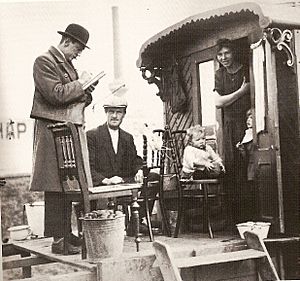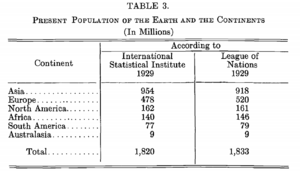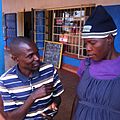Census facts for kids
A census is like a big survey that collects information about everyone living in a certain area. It's a way to count people and learn important things about them, like how many there are, where they live, and what they do. This information helps governments and other groups make good plans for the future.
The word "census" comes from Latin. In ancient Rome, a census was a list that kept track of all adult men who could serve in the military.
A census is different from a sample survey, where you only ask a small group of people. With a census, you try to count and get information from everyone. Census information is used for many things, like research, business planning, and even helping to decide where to build new schools or hospitals.
Counting everyone can be expensive, especially in large countries. Because of the cost, some countries are looking for new ways to collect this information. For example, some countries like Denmark, Finland, and Norway use existing government records instead of sending people door-to-door. Other countries, like France and Germany, do smaller "micro censuses" or "sample censuses" instead of a full count every time.
Census and Your Privacy
A census collects a lot of information, which is helpful for statistics. However, it's important that this information is kept private. Governments usually have strict rules to protect your personal details.
They often process the data in a way that makes it impossible to link specific information back to one person. For example, they might make small changes to the data or mix up information from similar people. This helps keep everyone's information safe and private, even with new technologies that can analyze data very quickly.
Ancient and Early Censuses
People have been doing censuses for thousands of years! The first known census happened in Babylon around 3800 BC, over 5,000 years ago. Records show they counted people, animals, and even how much butter, honey, and milk they had.
In ancient Egypt, censuses were taken as early as 3340 BC. The Persian Empire also did censuses around 500 BC to help with giving out land and collecting taxes.
In India, during the Maurya Empire, a wise man named Chanakya wrote about how to collect population information for the government. This was used for taxation and planning.
The Romans were very good at censuses. They did one every five years to keep track of citizens and their property. This helped them know who owed taxes and what their duties were. The word "census" actually comes from the Latin word "censere," meaning "to estimate."
The oldest census data that we still have today comes from China during the Han dynasty. In 2 AD, they counted about 59.6 million people, which was the largest population in the world at that time.
In the Middle Ages in Europe, one famous census was the Domesday Book. William I of England ordered this in 1086 after he conquered England. It helped him understand the land and how to tax it fairly.
The Inca Empire in the Andes mountains had a unique way of recording census information. They didn't have a written language. Instead, they used special knotted strings called quipus. These strings, made from llama or alpaca hair, or cotton, held numbers and other information using knots.
Related pages
Images for kids
-
Tehran Census 1869
-
Enumerator conducting a survey using a mobile phone-based questionnaire in rural Zimbabwe.
See also
 In Spanish: Censo (estadística) para niños
In Spanish: Censo (estadística) para niños





